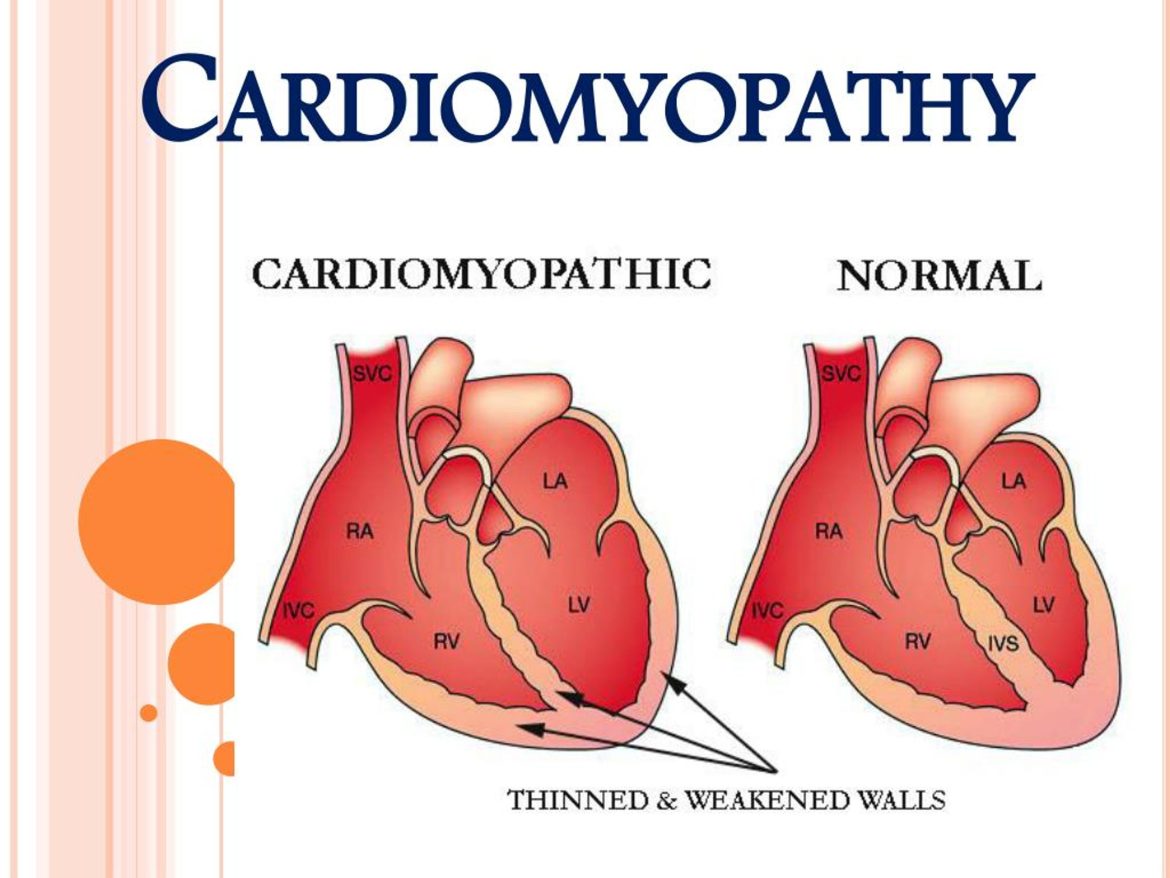Cardiomyopathy represents a group of diseases that affect the heart muscle, leading to its impaired ability to pump blood effectively. The condition can have genetic origins or result from environmental factors such as long-standing hypertension, infections, or chronic exposure to toxins. Given its complexity and potentially life-threatening implications, recognizing the signs of cardiomyopathy is crucial for early diagnosis and management. This article delves into four cardinal signs of cardiomyopathy, exploring their underlying mechanisms, clinical implications, and diagnostic pathways.
Understanding Cardiomyopathy
Before we explore the signs, it’s essential to grasp what cardiomyopathy entails. Cardiomyopathy is categorized into several types, including dilated, hypertrophic, and restrictive cardiomyopathies, each with distinct pathological features and clinical manifestations. Despite the differences, they all lead to compromised cardiac function and share some common symptoms.
1. Shortness of Breath (Dyspnea)
Mechanism and Implications:
Shortness of breath, especially during exertion or even at rest in advanced stages, is a hallmark sign of cardiomyopathy. This symptom arises because cardiomyopathy affects the heart’s ability to fill and pump blood efficiently, leading to a backlog of blood in the pulmonary circulation. This congestion in the lungs interferes with gas exchange, manifesting as breathlessness.
Diagnostic Pathway:
Diagnosing the cause of dyspnea involves a thorough clinical evaluation, chest X-rays, echocardiography, and possibly cardiac MRI. These tests assess heart size, function, and the presence of fluid in the lungs, indicative of congestive heart failure secondary to cardiomyopathy.
2. Fatigue and Weakness
Mechanism and Implications:
Fatigue in individuals with cardiomyopathy is profound and often disproportionate to the level of physical exertion. It results from inadequate cardiac output, which limits oxygen delivery to tissues, including muscles. Over time, this can lead to exercise intolerance and a noticeable decrease in the capacity to perform daily activities.
Diagnostic Pathway:
Evaluating fatigue entails a comprehensive assessment to exclude other causes and might include blood tests, cardiac imaging, and exercise stress tests to directly measure the heart’s performance and functional capacity.
3. Swelling (Edema) in Legs, Ankles, and Feet
Mechanism and Implications:
Swelling in the lower extremities is a consequence of fluid accumulation, which occurs due to the heart’s reduced pumping efficiency in cardiomyopathy. This inefficiency leads to an increase in venous pressure and fluid leakage into the surrounding tissues, manifesting as edema.
Diagnostic Pathway:
The assessment for edema includes physical examination and imaging studies. It’s crucial to differentiate cardiac-related swelling from other causes like venous insufficiency or renal failure. Echocardiography helps in assessing heart function, while blood tests can evaluate kidney function and other parameters.
4. Palpitations or Heart Pounding
Mechanism and Implications:
Palpitations are a common and unsettling sign of cardiomyopathy. They result from arrhythmias, which are frequently associated with cardiomyopathies. The heart muscle’s abnormal structure or function can disrupt the normal electrical pathways, leading to irregular heartbeats.
Diagnostic Pathway:
Investigating palpitations requires recording the heart’s rhythm during symptoms. Holter monitoring or event recorders can capture arrhythmias. Electrophysiological studies may be conducted for a detailed analysis of the heart’s electrical system, helping to pinpoint the arrhythmia’s origin and guiding treatment decisions.
Comprehensive Management Strategies
Managing cardiomyopathy involves a multi-faceted approach tailored to the type of cardiomyopathy and the severity of symptoms. Medications such as beta-blockers, angiotensin-converting enzyme (ACE) inhibitors, or angiotensin receptor blockers (ARBs) are often used to manage symptoms and improve heart function. In more severe cases, surgical options like septal myectomy or the use of ventricular assist devices (VADs) may be considered. Additionally, lifestyle modifications, including dietary changes, exercise within tolerated limits, and avoiding alcohol and tobacco, are essential components of comprehensive care.
Early Recognition and Intervention: The Key to Improved Outcomes
The early detection and management of cardiomyopathy can significantly affect the prognosis and quality of life for affected individuals. Awareness of the signs and symptoms, coupled with advances in diagnostic techniques and treatment modalities, offers hope for patients. Regular follow-ups with healthcare providers, adherence to treatment plans, and lifestyle adjustments play critical roles in managing the condition effectively.
Conclusion
Recognizing the signs of cardiomyopathy is the first step towards a timely diagnosis and effective management strategy. Shortness of breath, fatigue, swelling in the lower extremities, and palpitations are not only symptoms but also crucial signals that warrant further investigation. By understanding these signs and seeking medical advice promptly, individuals can take significant strides towards preserving heart health and maintaining an active, fulfilling life despite the challenges posed by cardiomyopathy.


